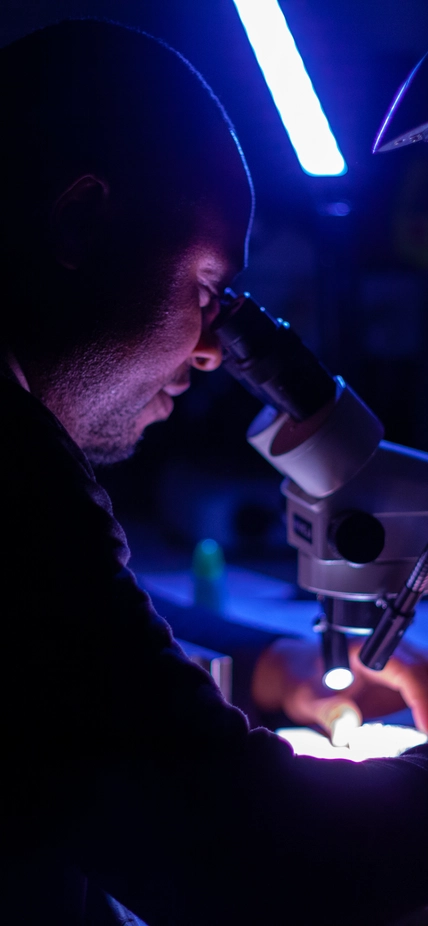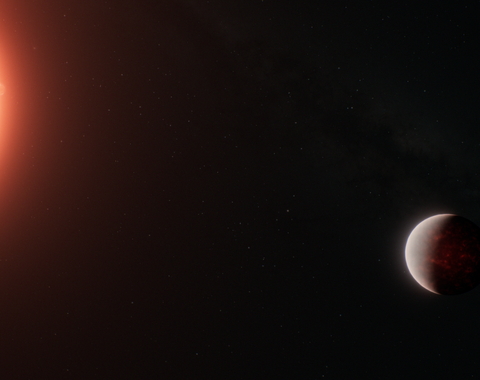The Earth's magnetic field, a shield that blocks harmful solar radiation and helps regulate our planet's climate, owes its existence to the active movement of iron within the Earth's core. The geodynamo, a complex system that drives the motion of iron, is essential for supporting life on our planet. However, like the neighboring planet Mars, the geodynamo can falter or even stop, making it imperative to understand the physical and chemical forces that sustain it.
At the Carnegie Science Earth and Planets Laboratory (EPL), former Postdoctoral Fellow Innocent Ezenwa delved into the properties of iron-rich alloys found deep inside terrestrial planets like Earth and Mars. Using the presses in EPL's advanced high-pressure laboratory, Ezenwa recreated the extreme pressure and temperature conditions present within the Earth's core, enabling him to better understand the properties of molten iron and ultimately the mechanics of the geodynamo.
Through his research, Ezenwa seeks to unlock the secrets of the Earth's core and ultimately reveal the mysteries of our planet's history and future. As we continue to explore the vastness of space and the possibilities of other habitable planets, his work is a vital step towards understanding the fundamental workings of planetary systems.
In this postdoc spotlight, Ezenwa discusses his work as a mineral physicist studying the dynamics in the interior of terrestrial planets as well as the challenges and rewards that come with this kind of research.
Learn more about postdoctoral fellowships at the Earth and Planets LaboratoryVideo Transcript
Science to me means curiosity. Science to me means questioning why things happen the way they happen. We need to understand why things happen from fundamental perspectives.
My name is Innocent Ezenwa and I'm a postdoctoral fellow at the Carnegie Institution for Science. I'm a mineral physicist. As a physicist, I use physics and chemistry principles to understand the dynamics that goes on in the interior of the terrestrial planets. So what I mean by terrestrial planets, I mean the Earth, Mercury, Mars, Venus.
So the interior of this planet is divided into sections. You have the core, you have the mantle, you have the crust. So my research is mainly in the core. The motion of iron material, which is largely the composition of the core, is what produces the magnetic field in our own planets. And so with this magnetic field, that's the reason why we have life on Earth. Because without the magnetic field, the Sun radiation will strike us and there will be no living objects on the surface of the Earth.
So it's important to understand all these phenomena, because without our deep understanding of them, then we might not be able to do some space exploration or understand why we are here on Earth. And what could exist beyond the Earth.
I've always loved physics all the way from high school. I was one of the best physics students of my high school, and I studied physics and astronomy at the University of Nigeria. But I never thought I would go in the direction of becoming a mineral physicist. My parents wanted me to become a medical doctor, and then for some reason, I found myself in the physics department and I loved it.
As a mineral physicist, I measure the transport properties of iron at pressure temperature conditions. So when you go into the deep interior or you're in the pressure and the temperature is increasing and we replicate that condition in the laboratory. And to do that, we use what we call here the high pressure cubes. And if you put this in a press, we recreate the pressure and then we heat up our sample to reach a target pressure. And we could do all kinds of cool experiments, measure the electrical transport properties, measure thermal, properties, measure of viscosity and all other properties.
With that, we kind of give the information to the modelers and they might and they will use our information to model and recreate the geomagnetic field in order to understand the phenomena that we don't really, really know much about.
Science has to do a whole lot with how you imagine things. So doing science in West is not as difficult as doing science back home in Nigeria. Back home with textbooks, you imagine a whole lot. And the fact that you have to imagine a whole lot without having those resources, you build your resilience. You build yourself so tough that when you have those resources, you have a kind of potential in you. That will support you as a person. So here science is cool because you have access to a whole lot of things. And that's what I love about doing science here in DC, in Canada, in Japan, where I was before coming here and beyond.
The most challenging thing about my work is the experiment itself. You're doing something new. There's a whole lot of potentials that something could go wrong. We take precautions, but, you know, sometimes you could have a blow out. You have a bang, which could be, you know, which would be terrifying. When you have a blow out, your experiment is lost. And there's frustration that comes with it because you don't have results and the day is completely gone. And you know, you have to cope with that. You have to get data to present and all that. So there’s a whole lot of pressure that comes with it.
The coolest thing about my work is the people I work with. Everyone I work with here (at the Earth and Planets Laboratory) is friendly. They all put up smiling faces and when you come in the morning, you have to be in the right spirit for the science. So, the people that surround you matter a lot.
You have to have passion for what you do. I have a passion for it. I think I'm born to do science.



